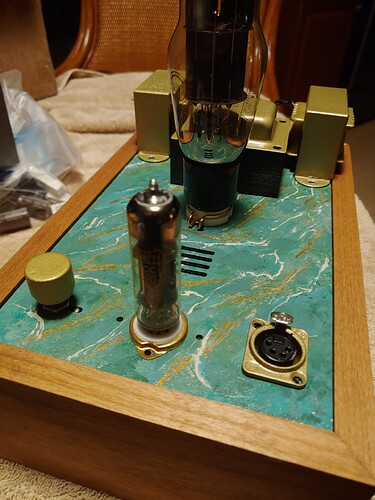Yeah I’m guessing the method of putting the cable together is what makes it better over stock. I don’t expect the connectors to make much difference. So I think I can get everything minus heat shrink which I already have for around $40
It’s worth the effort if only just to see if there is a difference.
It’s a pretty easy build if you can manage a 3 way braid.
I wouldn’t undervalue the connectors though, it’s relatively unclear to me how much of the difference is just it ending up being a large gauge and how much of it is noise rejection and the increase in the capacitance from the twisting and braiding.
i totally don’t see why you coulnd’t diy one. i got it mine from them splurge style and was like ill bite lol. the fact it comes with a 90 degree connector sold me. all stuff i could of looked up and found im sure, but i also don’t mind supporting companies i like. and i dont have more extra stuff i really don’t need when its all said and done this way as well. i got plenty of other wire, heatshrink, connectors the list goes on and on lol. i got tons of drivers i still need to build homes for(damn parts express sales lol)
I got a braided cable made with a 90 degree IEC from Pine Tree Audio. You can email for custom orders. I also had them make me RCA’s with 90 degree connectors.
I have an extra 270 ohm choke for the power supply if anyone wants it. It’s free - just pay shipping.
I bought 2 but the second one didn’t make a noticeable difference for me so I stuck with just 1.
So how did you find the Crack was improved after installing the choke? Also, how did you handle mounting? I’ve looked around and didn’t see any guides that recommend hardware. I can’t think of a good way that doesn’t involve drilling new mount holes—which I’d rather avoid.
You definitely need new mounting holes. Then, use standoffs to mount it. You can see pics of my Crack somewhere up above to see how I did it.
As for improvements, everything sounded a bit tighter, more controlled to me. Not a night and day difference for sure - very subtle.
erm… no thank you.
So I took crack at making my own budget upgrade power cable using these parts. I already had some heat shrink I could use. And so it ended costing me about $50.
Amazon.com: 25ft - 1/2 inch PET Expandable Braided Sleeving – Black – Alex Tech Braided Cable Sleeve : Electronics
BNTECHGO 20 Gauge Silicone Wire Spool 50ft Red and 50ft Black 2 Separate Wires Flexible 20 AWG Stranded Tinned Copper Wire: Amazon.com: Tools & Home Improvement
Amazon.com: BNTECHGO 20 Gauge Silicone Wire Spool 50 ft White Flexible 20 AWG Stranded Tinned Copper Wire : Tools & Home Improvement
Amazon.com: AC Power Plug - WAudio Audiophile Grade Power Connector for DIY : Electronics
Amazon.com: IEC Lock+ PA130100RBK Right or Left Angle The World's First Locking Rewireable IEC320-C13 Connectors No More Accidental Unplugging or Disconnections (Left/Right) : Electronics
I don’t recommend the high strand count wire I used at all lol. The wire is very flexible and didn’t really hold its shape—meaning it didn’t stay twisted well and was difficult to braid consistently.
Also something to keep in mind is braiding long lengths like this is a serious pain in the ass. Untwisted wire would probably be fine. But for this I had to roll up the wire first before starting which is still very cumbersome to work with if you only have two hands.
Finding a good IEC connector on Amazon was the hardest part. Most good connectors are fat and wouldn’t fit due to the Crack’s transformer being right next to the jack. This one (and only one) I found was great for the price. My one complaint is the quality of the screw terminals/contacts are subpar.
The wall plug connector was good and I have no real complaints.
Aside from the messy braid quality, I think the cable turned out alright.
In the end did it sound better than stock cable?
As far as I can tell, no.
But at least it didn’t make my Crack sound worse lol.
So I guess my advice for anyone else is to buy their kit or choose a better wire and to focus on doing a good braid.
So I’ve been using the Sylvania Gold Brand 5814 Triple Mica based on this guy’s recommendation. To sum it up, I found it to be a better version of the GE 12AU7 where it was very clear, neutral and dynamic. I got mine for $30 so it’s a great affordable option.
He gives a link to his detailed review of it if you’re interested.
Bottlehead Crack OTL AMP (Kit/DIY) - Official Thread - #283 by Wes_S - DACs and Digital - The HEADPHONE Community
INTRODUCTION
There’s just something about tubes, right? By my count I either currently own or have owned 7 vacuum tubed audio products; a Douk branded tube buffer, Loxjie P20, Darkvoice 336SE, Monolith Liquid Platinum, Eddie Current ZDT Jr., Cayin HA-1AMK2, and Schiit Saga. Those second order harmonics can be oh-so-sweet at times. So, when a HiFiGuides Forum member messaged me and said – and I’m paraphrasing here – “Hey, you wanna hear the sounds that come out of my Crack?” I thought that sounds like a gas! and immediately agreed. I am referring, of course, to the Bottlehead Crack tube headphone amplifier kit; this unit including the Speedball upgrade. I gave the Crack a thorough listen and what follows are my thoughts, and of course the best collection of Crack cracks I can muster.
TL;DR
The Bottlehead Crack is not the most technically proficient headphone amplifier in its price range, but for this reviewer it is among the most enjoyable. It’s usable with a narrow range of headphones, but for those that it works well with the listening experience is warm, smooth, fun, and very enjoyable. “Tube goodness” can be a thing and the Crack has it in spades.
KNOW YOUR REVIEWER
My preferred genres are rock/metal and classical/orchestral music. I’m getting to know jazz more and enjoying quite a bit. I also listen to some EDM and hip-hop. My hearing quirks include a high sensitivity to midrange frequencies from just under 1KHz to around 3Khz, give or take. My ears are thus quick to perceive “shoutiness” in headphones in particular. I describe “shoutiness” as an emphasis on the ‘ou’ sound of ‘shout.’ It’s a forwardness in the neighborhood of 1KHz and/or on the first one or two harmonics above it (when I make the sound ‘ooooowwwww’ into a spectrum analyzer the dominant frequency on the vowel sound is around 930Hz, which also means harmonic spikes occur again at around 1860Hz and 2790Hz). In the extreme, it can have the tonal effect of sounding like a vocalist is speaking or singing through a toilet paper tube or cupping their hands over their mouth. It can also give instruments like piano, but especially brass instruments, an added ‘honk’ to their sound. I also get distracted by sibilance, or sharp ‘s’ and ‘t’ sounds that can make ssssingers sssssound like they’re forssssssing esssss ssssssounds aggresssssssively. Sibilance does not physically hurt my ears nearly as quickly as shout, though. It’s distracting because it’s annoying and unnatural. Finally, in a new clause in this section, I’m discovering that I have a preference for more subtle detail. I like good detail retrieval and hearing what a recording has to offer, but I prefer that presentation to be what many would consider relaxed and subtle rather than aggressive or detail-forward. To my ear, more subtle detail-retrieval sounds more realistic and natural than aggressive, detail-forwardness. There is a balance here, though, because detail retrieval can get too relaxed and that can sound unnatural, as well. Readers should keep these hearing quirks and preferences in mind as they read my descriptions of sound.
FEATURES & BUILD
What is a Bottlehead Crack?
If you’re not aware, the Crack is sold as a kit and you assemble it yourself. This approach keeps the initial cost down somewhat with an entry cost of $349. The Speedball upgrade is highly regarded and runs the cost of the kit up to $464. If you want one prebuilt – and quite well at that – you can hire James at TheHeadAmpBuilder (https://www.etsy.com/shop/TheHeadAmpBuilder) to build it. From his website it looks like he charges somewhere in the $200-400 range for that service depending on what options you want. James was the builder of the unit loaned to me. This loaner unit also includes the Speedball upgrade.
Sum up the above paragraph and you get an output-transformerless (OTL) vacuum tube headphone amplifier for comfortably under $1000. Other similar options at the budget level are the Darkvoice 336SE and the Little Dot mk II. I have experience with the Darkvoice. It is also an OTL headphone amp with a very similar design to the Crack. I found it to be a bit too wet and sloppy sounding for my liking and its sloppiness and overall thickness has unfortunately been the representation of “the tube sound” to many budding audiophiles. I dare say that the Crack probably is the best entry point into tube headphone amps that aren’t technically lacking.
What is OTL and Why Does it Matter?
What’s the OTL business about? Vacuum tube amplifiers are voltage amplifiers which naturally have a high output impedance. Many tube amps (especially speaker amps but also headphone amps) will therefore be built with an output transformer. This transformer steps down some of that voltage, increases the current output, and thus also reduces the output impedance. Output impedance is important in determining the damping factor. The damping factor is the ratio of the load impedance (the number of ohms of the speaker/headphone + the resistance of the speaker/headphone cable) and the output impedance. The higher that ratio, the larger the damping factor. The damping factor gives an indication of how well the amplifier is able to control driver motion. The higher the damping factor, the more control, and often the tighter or quicker the sound. These output transformers are difficult to make well and often become one of the most expensive parts of tube amps. Eliminating the output transformer lowers the cost of a tube amp both in terms of part cost and design and build time, but brings back that high output impedance. The consequence of that is that only certain kinds of headphones work well with OTL amps, namely high impedance (hi-Z) dynamic-driver headphones. Once a headphone’s impedance gets to about 150Ω or higher, the damping factor falls into a range that strikes a nice balance between well controlled and smooth. This also means that buying the Crack means using only select headphones. Many Sennheisers are 300Ω and are great candidates. Beyerdynamic has several models that are 250Ω or 600Ω. Most ZMF headphones are also 300Ω. AKG and Audio Technica each have a model or two that are also 600Ω and good candidates to use with an OTL. And that’s it. Most headphones these days have quite low impedance. That’s because most solid-state amps have very low output impedance so damping factor is not a concern most of the time (there are exceptions, be careful). So keep in mind, if you’re looking to buy the Crack, or any other OTL amp, you’re headphone options are going to be limited. Make sure you like what any of those headphones can bring to the table before pulling the trigger.
Exploring One’s Crack
Once built the Crack is a metal plate with all the amplifier components mounted to that plate and the plate resting on a wooden box finished to your liking. Everything you need to access is mounted on the top plate; the power switch, AC power input, RCA stereo input, tube sockets, potentiometer, and ¼” (6.3mm) headphone jack:
That metal top plate seems designed to rest on top of the wooden box; gravity holding it in place. There are no screw holes or snaps to hold it in place. That means that when you need to remove something from your Crack, you need to apply some downward force on it or you will spread your Crack to an uncomfortable degree:
The downside of that is that with use the finish on that plate around the headphone jack dulls. Here is a zoomed-in version of the first pic above:
where a fingerprint-shaped area is worn a bit. I don’t see any way to avoid that, unfortunately. You could glue the metal plate to the wooden box, but I don’t recommend it for 2 reasons: 1) the wooden box isn’t very heavy and you’ll probably just lift up the whole amp when you unplug a cable and 2) all the circuit components are mounted to the underside of the metal plate. If you ever need to reach one to resolder a connection or the like, the box will likely be in the way.
There is no bottom to the box either. There are rubber feet on the bottom of the wood side panels but there is no bottom piece. The ventilation is good, but don’t flip your Crack over to look too much or you’ll dump everything out.
Tube Rolling
The Crack uses very common tube types; a 12AU7 for the driver or pre tube, and 6080 or 6AS7 for the larger power tube. These tube types are very easy to find and you can roll them to your heart’s content. My loaner unit came with a plethora of tubes. I swapped out a few. There are some sonic differences so some slight tuning to preference is certainly a thing you can do. I won’t go into huge detail about each tube I tried. Thankfully, HiFiGuides own @Hazi59 did a very thorough summary of things you can stick in your Crack: power tubes (Bottlehead Crack - #244 by Hazi59), driver tubes (Bottlehead Crack - #271 by Hazi59).
Microphonics
Tube amps are sensitive to microphonics, or noises induced when the components vibrate as the result of bumping the desk or the like. I remarked how the Cayin HA-1AMK2 was very susceptible to this. The Crack doesn’t make quite as much noise when handled roughly, but with no music playing and headphones on, I can hear slight hums modulating as he hit the keys on my keyboard while typing this review. It’s noticeable between tracks, during quiet tracks, etc.
SOUND
Test Gear
I have two headphones that handle OTL tube amps well: Massdrop + Sennheiser HD6XX (300Ω), and the 600Ω version of the Beyerdynamic DT880. Those are the two cans I used to hear sounds from the Crack. Sources included the single-ended outputs of a Berkeley Audio Designs Alpha Series 2 DAC and a Schiit Modius. Both DACs were fed by a Singxer SU-2 digital-to-digital converter; AES to the Alpha S2 and RCA coaxial to the Modius. The reasoning here is the Alpha would be bottlenecked by the Crack so I’d get a sense of the Crack’s true capabilities. The Modius was used as an example of a more price-appropriate piece to get more of a ‘real-world’ sound from the Crack. Arguably the Modius alone is too inexpensive to give such a representation, but its performance is much higher through the SU-2 than using the Unison USB. Arguably that puts the Modius performance more in line with mid-fi DACs. Also I think it goes without saying that a Crack is a natural way to deliver Schiit.
As I mentioned above, I didn’t do much tube rolling. Most of these impressions were formed with a Telefunken 12AU7 smooth plate or CEI 12AU7 for the driver tubes. For the power tube I briefly tried the RCA 6080 that is included in the stock kit, but mostly listened with a Mullard 6080 or Sylvania 12AS7. I eventually landed on the Telefunken + Mullard as the pair I used for the most listening. As you read my sound impressions below, keep in mind that they are general. I found that tube rolling changed the degree of what is described below slightly, but I did my best to describe the general patterns of what I was hearing.
Sound Signature
The Crack has elements of the stereotypical “tube sound” associated with tube amps by many unfamiliar with tube amps; warm, smooth, and slightly wet. In this context, ‘wet’ means a sound that is somewhat blended together, not having as distinct a differentiation between sounds as most solid-state amps – particularly the very analytical leaning models proliferating the market right now – have. However, this is not to say that the Crack ever sounds slurred or sloppy. It still maintains very good detail and resolution for its price point, but with smoother edges to the individual sounds. The Crack also tilts ‘fun’ in its presentation, particularly in the low-end where there is a healthy, but not-overpowering, sense of punch and slam with solid sub-bass presence. I consider myself a basshead. The 6XX and the DT880 are not bass monsters, but both had an authoritative, usually satisfying punch with kick drums and bass guitar string plucks. The mid-range and treble are both a bit relaxed. The sound is generally very enjoyable and listenable for long periods of time.
Detail Retrieval
Let’s set the stage here a bit: prior to listening to the Crack I was using the Alpha S2 with the Vioelectric HPA-V281 amp while reviewing the Heddphone and comparing that to my HiFiMan HE-1000V2. There is a lot of detail and resolution going on in those chains. To the credit of the Crack + HD6XX/DT880, they weren’t as detailed, but they also didn’t leave me immediately clamoring for more detail. I quickly got to toe-tapping and head-bobbing and just enjoying the music. Classic signs of good detail retrieval were all present: room reverb, audible breaths from vocalists, and even hints of bass texture.
Spatial Performance
The spatial performance is a bit tougher to evaluate because of the headphone options on hand. The 6XX is not a master of spatial reproduction, to say the least. The Crack, to a limited extent, was able to make the 6XX sound a little less 3-blob-y in its imaging than I’ve heard from solid-state amps in the price range. There was more hint of sounds happening in the left-center and right-center images, for example. The overall soundstage is still somewhat intimate and flat, however. That said, the Crack still opens up the 6XX moreso than similarly priced solid-state amps, from my experience. The DT880 gives a little clearer picture. For my money, the DT880 is the spatial performance reference at its price point. The Crack makes the 880 sound big with nice width and some height. There is a hint of soundstage depth, but not a ton. Real soundstage depth is usually an aspect of performance that requires significantly more money to achieve, it seems. With the 880, the Crack also did a solid job placing instruments in the soundfield and separated them well enough that I didn’t get distracted by a lack thereof.
Awake! Ye Headphones!
Both the 6XX and DT880 benefit from being driven by an OTL tube amp, and the Crack provides a crystal-clear example of this. The 6XX especially transforms over its performance with solid-state amps in a similar price range. The subbass and upper treble become less recessed and the 6XX sounds like an overall more complete, fully fleshed-out headphone, while maintaining that lush, organic mid-range for which it is known. The Crack + 6XX were very enjoyable on a lot of rock and metal…which is right up my alley. The DT880 does not transform as much as the 6XX but the Crack gives it more subbass grunt and a bit sweeter treble than most solid-state amps in the price range can give it. Either way, I think the Crack is an excellent pairing for both cans.
At times I found it helpful to lower the volume on my DAC, especially with the 6XX. With the 6XX the Crack can present as surprisingly powerful. I usually keep my Alpha S2 at about 50% volume so that I can keep my Vioelectric HPA-V281’s potentiometer around 12:00 with many of my headphones. That worked well with the 6XX but the DT880 needed more DAC volume to be pushed to the same level without maxing out the Crack’s pot. When I switched from Alpha to Modius, which has a fixed output level, I first used the 6XX and about blew my head up. With some louder rock tracks the pot barely got beyond 9:00 or 10:00 with the 6XX, but that allowed the DT880 to be comfortably driven in the 12:00-3:00 range.
COMPARISONS WITH OTHER AMPLIFIERS
There are three amps I’ll compare with the Crack. The first is the Darkvoice 336SE as they are very similar designs. The second is the Cayin HA-1AMK2, which is transformer coupled tube amp that can be found used in the same price range as a new, fully assembled Crack. Also, with tube rolling, the Crack can easily cost as much as a brand-new stock 1AMK2. The third is the Monolith Liquid Platinum, which is not a pure tube amp, it is a hybrid tube amp with a tube preamp section and solid-state amp section. It’s a little harder to pin down the price of the MLP. It initially sold for $799US but has been a roller-coaster for a while. If you’re watching closely you can get one for $500 or less new with some regularity. If you score one there, even with upgraded tubes, the price is close to what a fully-assembled, brand-new Crack with upgraded tubes would be. Let’s start with the Darkvoice.
Crack vs Darkvoice 336SE
I no longer have the Darkvoice on hand but listened to it for several months with a 6XX and DT880 several months ago. Sound memory fades but one thing that stands out is the Crack sounds much more in-control. The Darkvoice is thicker and gooey-er and wandered into sibilant territory more frequently than the Crack. The Darkvoice brought the bass and treble to more life on the 6XX like the Crack does, but did so with less control, generally sounding sloppier. That’s the biggest difference between the two. Both the Darkvoice and the Crack are more fun-leaning in their tuning with warm, thick sound signatures. The Crack just does it with overall superior technical performance in terms of detail and general cleanliness.
Crack vs Cayin HA-1AMK2
The comparison with the Cayin was done using the Telefunken and Mullard tubes in the Crack. I reasoned that the prices for which the Telefunken and Mullard pushes a new, fully assembled Crack with these tubes into the same price territory as the 1AMK2 with its stock tubes. I used the Cayin’s stock tubes for this comparison. I gave the Cayin HA-1AMK2 a glowing review a few months ago. I rediscovered this amp as I was playing around with this Crack. One of the biggest differences is the power. The Crack really needs to be cranked to drive the DT880. It drives the DT880 to ear-splitting levels with lots of control, but the 1AMK2 is just a brute, plain and simple. It’s rated at 2.2 watts per channel at 600Ω. I don’t need to move its pot past 11:00 and the DT880 is playing loud enough for OSHA compliance to come kicking the door down. The biggest area this power manifested itself was in the bass, and mostly with the DT880. The DT880’s subbass rumbled deeply and powerfully with the 1AMK2 where the Crack didn’t have quite enough juice to match. Interestingly, the Crack can create the perception of more bass punch/slam, though. I think that’s a psychoacoustic effect due to perceived frequency response. Let’s compare the perceived frequency responses in a bit more detail.
The Cayin has an overall more even frequency response with bass, mid-range, and treble all sounding like they are presented at a similar level whereas the Crack leans warm with more laid-back mids and treble. The 1AMK2 may still strike many listeners as somewhat warm as compared to true neutral, or certainly as compared to the very bright-and-analytical leaning solid-state amps proliferating the market right now, but the Crack is noticeably warmer yet than the 1AMK2. These different tunings make the Cayin sound a little brighter and generally more forward than the Crack, and the Crack sound darker and more relaxed. I think this creates the illusion that the Crack is the bassier amp, especially with the 6XX. The Crack can really slap in the low end with that headphone. The Cayin does too, arguably even moreso, it’s just harder to tell because the mids and treble are more present, creating a psychoacoustic effect of lesser bass.
The Cayin is just a hair more overall resolving. I worked hard to make sure that I was actually hearing more resolution rather than being fooled by the increased mid-range and treble presence, and with lots of work, yeah, it’s definitely real. It’s very subtle – both amps resolve quite well for their price – but the Cayin draws out a last bit of detail the Crack does not. When fingers slide along guitar strings, for example, the Cayin was just slightly more convincing. It also was a little more distinct in the way it presented room reverb and gave individual instrument and voice sounds just ever-so-much more definition. That said, when listening to the Crack I never thought it lacked for detail. As I mentioned above, moving to Crack + 6XX after listening to V281 + Heddphone or HE1000V2 was a far less abrupt change in detail retrieval than I expected.
The Cayin also puts out a bigger, more coherent soundstage. It sounds wider and taller and fills in left-center and right-center more completely and convincingly than the Crack. This bigger stage also translates to some music, like symphonies or other epic tracks like Bohemian Rhapsody, sounding more grandiose and larger-than-life like they’re often meant to. The Crack may have slightly more soundstage depth, however. With the DT880 on certain tracks I thought I detected the faintest hint of the Cayin presenting a little bit more of a wall of sound where the Crack was creating the illusion of a three-dimensional listening space slightly more effectively. This is definitely splitting hairs, though. At times the Cayin’s width can get in its own way. It can sound like it’s artificially stretching the stage horizontally and that can move sonic images just off of where they’re expected to be. An example that stands out is “Trouble Coming” by Royal Blood. The Cayin was placing the snare drum slightly right of center, which is normal. But it was placing the lead vocal slightly left of center, and I’m used to it being centered. The Crack centered the lead vocal and put the snare just slightly to the right. Which one got it correct? I check with V281 and HE1000V2. That combo agreed with the Crack.
Crack vs Monolith Liquid Platinum
This comparison was also done using the Telefunken and Mullard tubes in the Crack, and with new-old-stock Amperex PQ Gold Pin 6922 tubes in the MLP. The Crack was connected to the SE output of the Modius and the MLP was connected to the balanced output of the Modius. Did this bias the test in favor of the MLP? Possibly, but very minimally. The difference between balanced and SE performance from the Modius isn’t huge, nor is the difference in MLP’s performance from its balanced or SE inputs. Either way, those shopping for an amp in this price range will want to know how the best performance of one piece compares to the same in the other. Also of note, I used both the 6XX and DT880 in this comparison. My DT880 is modded to accept a dual-entry cabling system so that the balanced output of the MLP can be used to power it. The SE headphone output of the MLP is not great so if you have a Beyer DT series headphone you have not modded, this comparison may not be all that interesting to you.
With the 6XX the Crack has an advantage in the subbass. The truly deep bass is more present, more full, and punches harder than the with the MLP. Kick drums, for example, sound punchier, weightier, and generally fuller through the 6XX. The MLP opens up the soundstage more and has more coherent imaging, however, and generally sounds cleaner. The MLP is also slightly mid-forward in signature which brings the mids, and to a lesser extent the treble, more forward, similar to what the HA-1AMK2 does but not to the same extent. To my ear the already excellent mid-range timbre of the 6XX is improved just a bit by MLP over the Crack. The MLP is also more resolving. I again listened very closely to make sure I was hearing more actual resolution and not being fooled by a more forward presentation in the mids and treble. The detail is there and its real. A tell-tale sign is that after volume matching, I always wanted to turn up the Crack just a bit more because it sounded like it was missing something; the micro-detail just wasn’t quite there.
With the DT880 the picture was less clear. The subbass leader flipped to the MLP. The Crack again ran out of steam to drive the deep bass on the DT880 where the MLP had plenty of power. The MLP again sounded bigger, cleaner, and more detailed. However, the mid-forwardness of the MLP thinned out the mid-range timbre of the DT880 as opposed to the Crack’s mid-timbre. Vocals, strings, and pianos sounded more natural to me through the Crack + DT880 than the MLP + DT880. Both amps also controlled the sometimes too-hot treble of the DT880 very well, rarely being sibilant. But the Crack had just a bit more glare to it that would lead to fatigue more quickly.
Comparisons Take Away
To me there isn’t a clearly superior amp out of Crack, 1AMK2, or MLP. The 1AMK2 and MLP are more technically proficient more often. But, the Crack has an undeniable enjoyability to it and its more relaxed nature can give it an advantage over long listening periods. The decision will come down to personal preference and whether the end user has headphones to use with the Crack or plans to get them.
FINAL THOUGHTS
Sometimes reviewing sound gear is just plain work. This was not one of those times. I thoroughly enjoyed getting to know the Crack and listening to what it has to offer. It really is an engaging, fun listen through both the HD6XX and DT880. No, it was not the most technically proficient listening experience I’ve had, but that did not detract much from the enjoyment. The bottom line is I enjoyed listening to most of my music through the Crack and doing so for long periods of time. That’s really what matters. If you are interested in seeing what tubes are all about, this is an excellent starting point. Grab a Senn HD600 or HD650/6XX and order a shipment of Crack and see what all the fuss is about. You will be glad you did.
Apologies if all the Crack jokes came across as a bit two cheeky.
Thanks for reading and enjoy the music! ![]()
The owner of the loaner unit I reviewed above has asked me to facilitate the sale of the unit. Details in the buy/sell thread: Buy/Sell and Looking for Thread - #1903 by WaveTheory
That’s a KILLER deal, IMO. Move fast!
Edit: SOLD!
n - 1 of you were too slow 
What a great write up bro I loved this, you have a prose for sure.
A classic. I’m glad you got the butt of the jokes.
Thank you kindly.
How you describe your hearing sensitivities sound a lot like mine. I’ve always had a natural gift for discerning voices. I horrible with remembering faces, can’t tell one actor from another but I can recognize the voiceover work of an actor in a TV commercial from ten years ago if I hear it.
Not too long ago I had a hearing test, a real hearing test with an audiologist. (not the guys who study Audi) and the bad new way that I’m losing a good bit of hearing above 10k about 16db down at 12k and pretty much deaf at 16k. That was the bad news, the good news is that I still have far better than average in the vocal ranges from 1k to about 6k. So shoutiness in speakers and sibilant sounding headphones is something I’m very sensitive to.
Having had the LP for a long time I think you did a very good comparison between the two amps. I will say however that I found myself listening to the LP more critically and listening to the Crack just out of pure blissful enjoyment to the music I was listening to. Because it’s just too much fun to listen to. My headphone of choice is the HD600 but I will say the HD58X also does quite nicely if someone already has that can, no need to immediately run out and get another of the Senn line.
Enjoyable read BTW, thanks for the effort. I’m glad it wasn’t too much “work” for you.
Great review. I liked the Schiit and Crack humour 
Anyone in Canada want to sell me some power tubes? I’m currently rocking the stock GE 6as7g. I picked up a Mullard CV4003 for $40 CAD to the replace the stock RCA clear top and I’d like something that can pair well with it. I hear the 6080 Mullard pairs well, but I’m open to others.
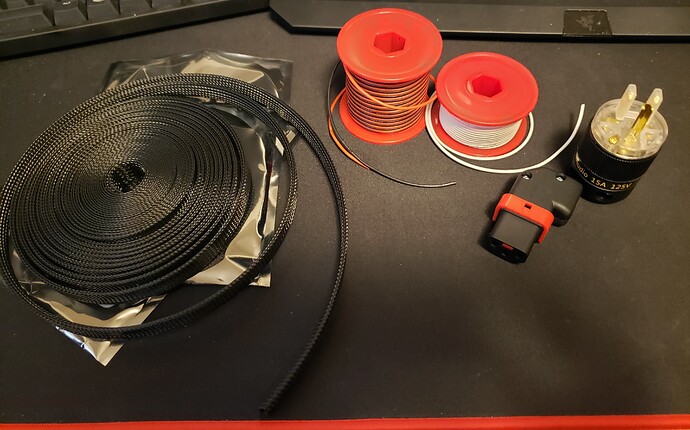
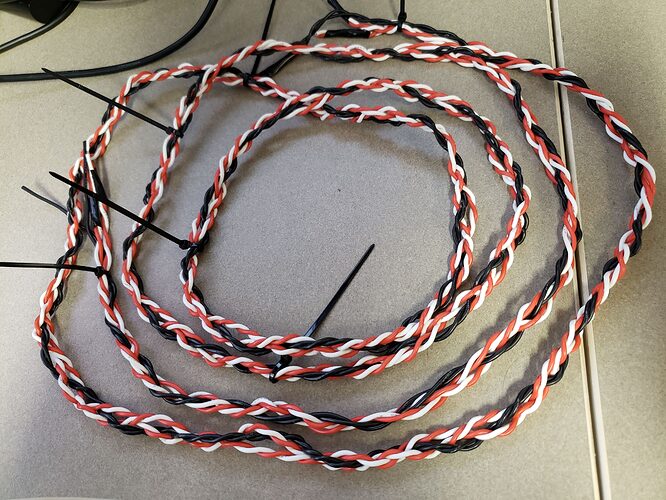
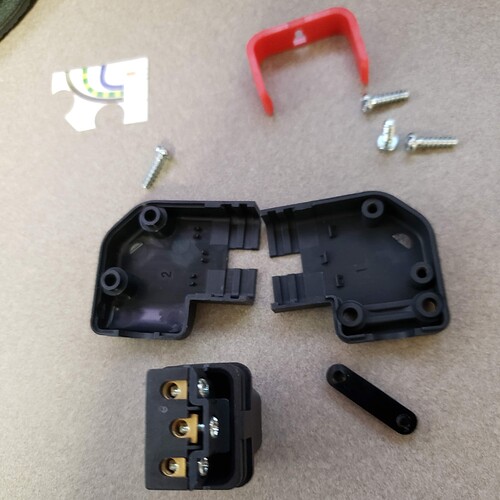

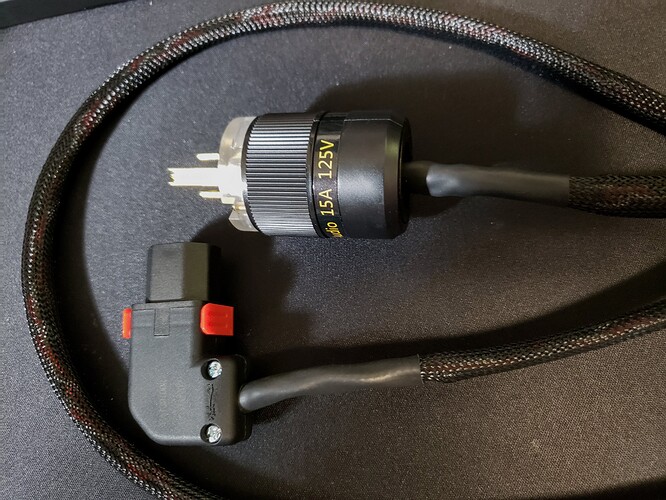
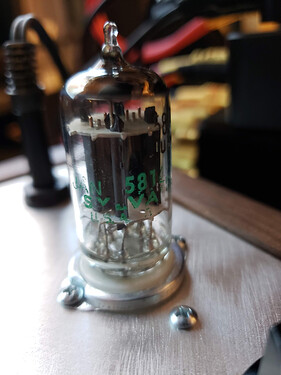
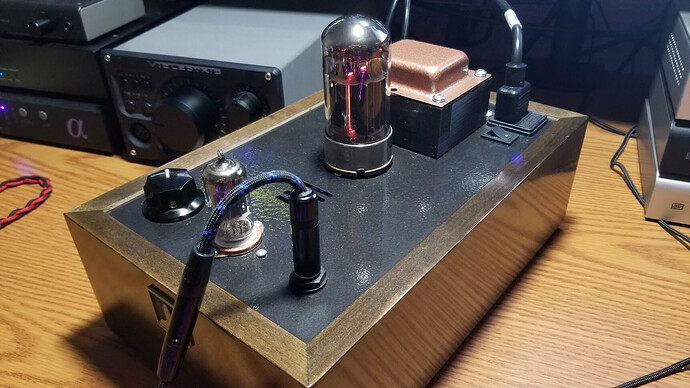
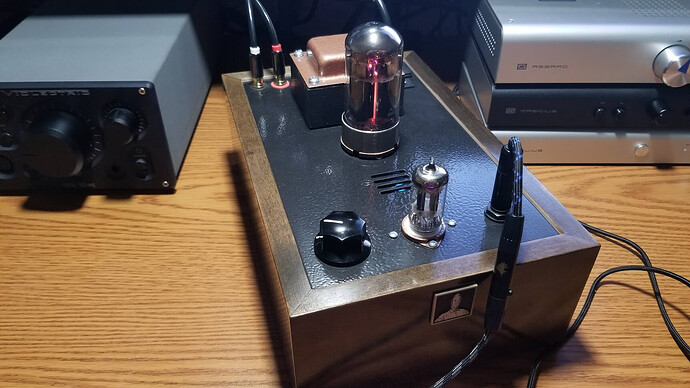
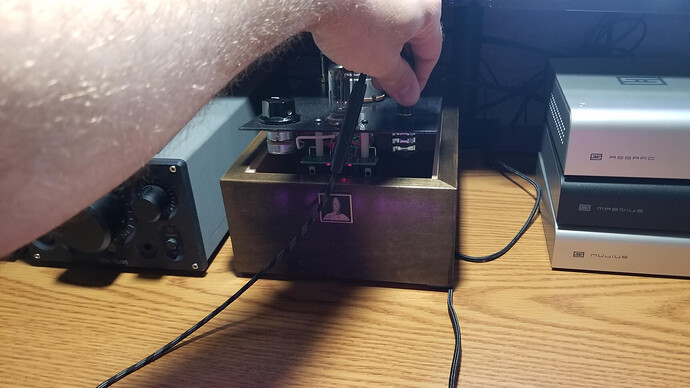
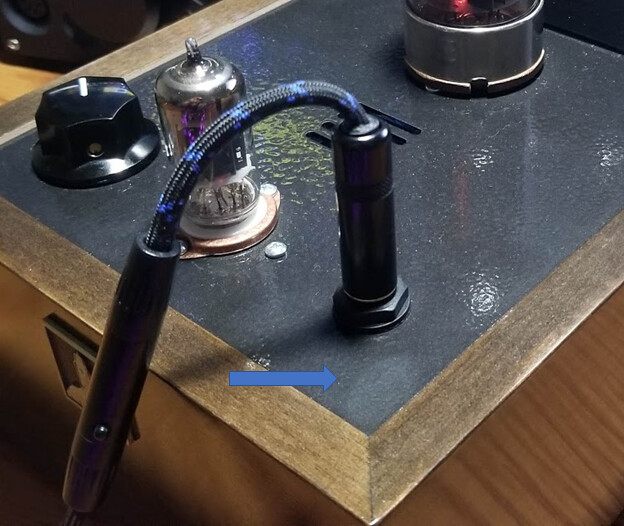
![[1071] Getting In My Ex-Girlfriend’s Back Door (April Fools Video)](https://img.youtube.com/vi/Joed0P3hhbc/maxresdefault.jpg)
